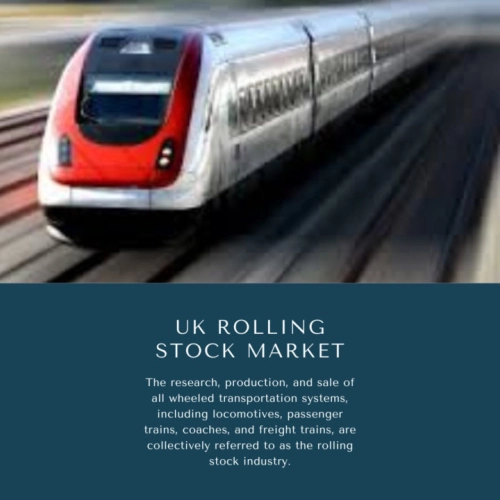
- Get in Touch with Us

Last Updated: Apr 25, 2025 | Study Period: 2024-2030
The research, production, and sale of all wheeled transportation systems, including locomotives, passenger trains, coaches, and freight trains, are collectively referred to as the rolling stock industry.

The demand for safe, quick, and efficient transportation is rising, as are the use of public transportation services as a means of reducing traffic congestion. These and other factors are driving the growth of the worldwide rolling stock market.
Over the coming years, this upward trend is anticipated to continue as both rail freight and passenger traffic are on the rise. And therefore, spurred by government programmes to create cutting-edge rail transport infrastructure in nations cause rapidly growing rolling stock industries.
For non-electrified rail lines, the majority of major rolling stock producers are developing hydrogen and battery trains as sustainable alternatives to diesel trains. Green rolling stock advancements and inventions, however, cannot prosper alone.
They must also be accompanied with advancements in the energy system. For instance, infrastructure for refuelling and charging needs to be constructed.
In order to produce and install electrical systems and components for the rail sector, a subsidiary of Motherson Sumi Systems, a leading manufacturer of transportation component parts, has purchased the assets of Bombardier Transportation (Rolling Stock) UK Ltd.
Motherson Rolling Stock Systems informed stock exchanges that this would involve the manufacture of wiring harnesses, panel and cabinet construction, and electro-mechanical assembly in Derby.
The UK Rolling Stock Market accounted for $XX Billion in 2023 and is anticipated to reach $XX Billion by 2030, registering a CAGR of XX% from 2024 to 2030.
| Sl no | Topic |
| 1 | Market Segmentation |
| 2 | Scope of the report |
| 3 | Abbreviations |
| 4 | Research Methodology |
| 5 | Executive Summary |
| 6 | Introduction |
| 7 | Insights from Industry stakeholders |
| 8 | Cost breakdown of Product by sub-components and average profit margin |
| 9 | Disruptive innovation in the Industry |
| 10 | Technology trends in the Industry |
| 11 | Consumer trends in the industry |
| 12 | Recent Production Milestones |
| 13 | Component Manufacturing in US, EU and China |
| 14 | COVID-19 impact on overall market |
| 15 | COVID-19 impact on Production of components |
| 16 | COVID-19 impact on Point of sale |
| 17 | Market Segmentation, Dynamics and Forecast by Geography, 2024-2030 |
| 18 | Market Segmentation, Dynamics and Forecast by Product Type, 2024-2030 |
| 19 | Market Segmentation, Dynamics and Forecast by Application, 2024-2030 |
| 20 | Market Segmentation, Dynamics and Forecast by End use, 2024-2030 |
| 21 | Product installation rate by OEM, 2023 |
| 22 | Incline/Decline in Average B-2-B selling price in past 5 years |
| 23 | Competition from substitute products |
| 24 | Gross margin and average profitability of suppliers |
| 25 | New product development in past 12 months |
| 26 | M&A in past 12 months |
| 27 | Growth strategy of leading players |
| 28 | Market share of vendors, 2023 |
| 29 | Company Profiles |
| 30 | Unmet needs and opportunity for new suppliers |
| 31 | Conclusion |
| 32 | Appendix |